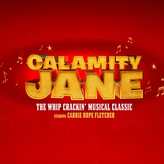Queering Archives
- Elemental Theatre Company

- Dec 23, 2021
- 5 min read
Cultural, gender and sexual diversity is liberating art forms across the world, and finally black, women and queer voices are finally being heard after hiding their light under a bushel for so long. Go back 40 years and a ‘diverse’ character may appear on a television show simply as a comic reference (think Manuel in Faulty Towers) or as a plot point. It was rare that one would get to see, for example, an empowered black woman on stage or screen.
Thankfully today there is a wealth of diversity on the stage and screen, with stage going above and beyond television viewing. However to better understand why this is important we have to look at history, and most specifically archives! We at ETC have spent a lot of time with archival data and footage from the 90’s in preparation for our latest show (Door to Door: 1994), and can confirm we found it hard to find non-heteronormative stories!
Video archiving is so prominent now, especially with TikTok and YouTube, but also from the British film institute or more personal video archives on your phone. Many gay people have been inspired or inspirational with their coming out videos and solidarity through video messages. Queer video is something to behold in the 21st century. But you don’t have to go that far back to see queer stories being so restricted through fear of offence and controversy.

Queer stories shown on the TV have been routinely criticised by the British press. Even as late as 1998 Piers Morgan wrote in the Sun newspaper that TV show Eastenders should be scrapped after airing their first gay kiss, referring to the characters as ‘Yuppy Puffs’, thankfully a phrase that would not pass most editors today. This language however was prevalent at the time, the Daily Express, Telegraph, Evening standards and of course the Daily Mail all actively contested the homosexuality law reforms. Which were detrimental to the telling of Queer stories on stage and screen for the years that followed.
When the show ‘Queer as Folk’ was released, there was concerns that the show didn’t challenge any stereotypes “All the gay men wanted non-stop sex, and all the lesbians wanted babies”. The Writers of Queer as Folk received a backlash from the LGBT community. To which they responded “I write drama, not dreary stories, like you life is”. As gay writers, telling gay stories, were they wrong to play into the stereotypes? Or in doing so were they able to open up the conversation and allow queer stories to finally be heard?
In contrast the TV show ‘Will and Grace’ was criticised for reinforcing heterosexual norms. Despite having two main characters who were gay (Jack and Will), they were rarely shown being physically affectionate with other men; however the lead female, Grace, a heterosexual, was often in sexual situations with men. Where did the censorship come in here? Was it too soon for heteronormative to see man on man action? Or again, was this just another stepping stone to tell real stories of how queer people live normal lives?
The third view to take on this period of television and emerging gay stories, is that of Zoe in Emmerdale, or Tony and Simon in Eastenders. Both representing the LGBT community, however both regarded as ‘Bland’. Truly the LGBTQ+ community felt under represented in this time of stage and TV.

“So much of the archive available to queer historians is authored by people who judge, police, condemn and punish non-normative sexuality and gender”
Homosexuality was illegal in England until 1967, Scotland until 1980 and Northern Ireland until 1981! So to show Homosexuality in the arts was highly controversial. The Lord Chamberlain actively banned theatre performances depicting or referencing Gay men for a number of years. The play ‘South’ was banned in 1955 for its implied homosexuality by it’s gay writer, yet became one of the first broadcast queer stories on ITV.
Around this time Gay actors were still present on the TV, however their sexual exploits were used for comedy. Homosexuality was often confused with effeminacy, such as Kenneth Williams in the Carry on Films. Gay men therefore were represented and expected to be ‘camp’ and ‘queeny’, where lesbians were shown as ‘butch’. This alienated a who culture of LGBT adolescents who did not see themselves in these characters. It’s fair to say that this is detrimental to their mental health!

Finally however, things are being done to remedy this. Fantastic historians are attempting to ‘Queer’ archives, and find gay stories which have been hidden away for so long. Because history has always been written by the (heteronormative, white, male) winners, so many gay stories have been devalued, misinterpreted and omitted.
The stories of celebrated gay Oscar Wilde have re-entered the world and are being praised for the works of art they are, opposed to the previous emotions connected with the writer. The creative director of the Royal Shakespeare are looking for gay stories within the Bards work, and many original pieces of theatre and TV are telling the lost stories of the gay characters who were previously erased from the glory they deserved.
We have such an exciting time ahead of us for the retelling of lost history in the world of the arts and Elemental Theatre Company are so glad to be part of such an important movement in performance history. Through our latest show Door to Door 1994, we want to tell the true story of gay people living in a mining town, how they were treated by others and finding solace in the one and only gay club (Take One) in Nottingham, in the 1970s.
“The only difference between the saint and the sinner is that every saint has a past, and every sinner has a future.”
It’s time for the sinners to have their stories told in the future!
Thank you for taking the time to read this article. Bellow are a series of references used when researching this topic for you to further your reading and challenge your beliefs.
[1] Davidson, A. (1998). Queer as Folk. Mediatheque Archive, BFI.
[2] The Sun (1998). The Sun. 8 Jul.
[3] Daily Mail (1998). Daily Mail. 3 Jul.
[4] Morgan, P. (1989). Scrap Eastenders call over gay kiss. The Sun.
[5] Gay Times (2000). the return of QUEER AS FOLK. Gay Times. Feb.
[6] Wyatt DA. Gay/lesbian/bisexual television characters. http://home.cc.umanitoba.ca/~wyatt/tv-characters.html. 2002.
[7] Sexuality, contraception, and the media. Committee on Communications, American Academy of Pediatrics. Pediatrics. 1995 Feb; 95(2):298-300.
[8] Arondekar, A., Cvetkovich, A., Hanhardt, C.B., Kunzel, R., Nyong’o, T., Rodriguez, J.M. and Stryker, S. (2015). Queering Archives: A Roundtable Discussion. Radical History Review. May.
[9] Fisher, D.A., Hill, D.L., Grube, J.W. and Gruber, E.L. (2007). Gay, Lesbian, and Bisexual Content on Television.Journal of Homosexuality, [online] 52(3-4), pp.167–188. Available at: https://www.ncbi.nlm.nih.gov/pmc/articles/PMC2000838/.
[10] Brown, L. and Strega, S. (2015). Research as Resistance. Second ed. Women’s Press, p.11.
[11] Corner, L. (2019). Apple CEO Tim Cook reveals what made him want to publicly come out. [online] GAY TIMES. Available at: https://www.gaytimes.co.uk/life/apple-ceo-tim-cook-reveals-what-made-him-want-to-publicly-come-out/ [Accessed 17 Nov. 2021].
[12] Fox, C. (2019). 10 years of Grindr: A rocky relationship. BBC News. [online] 25 Mar. Available at: https://www.bbc.co.uk/news/technology-47668951 [Accessed 17 Nov. 2021].
[13] Adrian Bingham, Family Newspapers? Sex, Private Life and the British Popular Press (2009) Oxford Press (p.196)
[14] Sexual offences act, 1967
[15] Daily Sketch, 25 November 1959
[16] Buckle S. (2018) Homosexuality On The Small Screen. London. I.B. TAURI
[17] Brown, D. (2009). The Da Vinci Code. Bt Bound.
[18] Wilde, O. (2021). A woman of no importance. Portland: Mint Editions.
[19] The Times, 25 February 1999





















































댓글